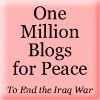William F. Schulz (ed), The
Phenomenon of Torture: Readings and Commentary. University of Pennsylvania
Press, 2007. 389 pages. $34.95
One of the paradoxes of torture is that it plays hide-and-seek with us, a game we Americans are only too happy to go along with.
On the one hand, torture shrouds itself in fog and night, whispers, innuendo, secrecy. It thrives on the anxiety and fear that mystery cultivates. It conceals where the torture chambers are, what the torturers look like, who thinks up the techniques that torturers use on victims. We don't hear the screams or smell the blood, shit, and burned flesh. Torture is coy.
But on the other hand, torture needs to be a little public to be effective as a tool for discouraging social and political dissent. What's the use of having a weapon if you don't flourish it to intimidate the enemy? Granted, torture is rarely flourished, but it doesn't really need to be. All that's necessary is for the public to know that torture is done, even if its details are hidden for the most part. All that's necessary is that a few torture survivors walk among us as reminders.
Because so little is known about torture except that it's practiced somewhere on persons unknown by persons anonymous, it's not uncommon (especially given White House, Justice Department, and Department of Defense spin) for many Americans to think of it in abstract ways. This is dangerous, because abstraction breeds false conclusions: torture isn't all that bad, not much worse than a fraternity hazing; torturers are heroes, willing to do dirty jobs for the sake of the common good; torture is effective as a means of intelligence-gathering; torture makes us safer. These distortions don't totally deprive torture of its night-and-fog-mystery, but they do make it morally palatable during times of crisis--or at least the torture that our government, as opposed to theirs, authorizes.
That's why this brand-new anthology of readings, put together by a past Executive Director of Amnesty International USA, is so important. William Schulz collects texts from historians, theologians, psychologists, philosophers, literary critics, novelists, attorneys, torture survivors, human rights organizations, and actual torture manuals. Taken together, they go a long way toward disabusing us of our false abstractions about torture. Even a random dip into this excellent book gives the reader a strong taste of the concrete reality of torture.
The collection is divided into seven topic-centered sections: (1) Torture in Western History, (2)Being Tortured, (3) Who Are the Torturers, (4) The Dynamics of Torture, (5) The Social Context of Torture, (6) The Ethics of Torture, and (7) Healing the Victims, Stopping the Torture. An appendix provides excerpts from the UN Convention Against Torture, International Standards Against Torture, and the standard US Army field manual on interrogation. Authors include Michel Foucault, Voltaire, Molefe Pheto, Aleksandr Solzhenitsyn, Jean Amery, Adam Hochschild, Stanley Milgram, Frantz Fanon, Jacobo Timerman, Kate Millett, Rhonda Copelon, Elaine Scarry, Hannah Arendt, John Conroy, Alan Dershowitz, and Henry Shue. William Schultz contributes an introduction as well as an excerpt from his earlier book Tainted Legacy: 9/11 and the Ruin of Human Rights. (Curiously, there's no selection from Sister Dianna Ortiz, the American nun who was kidnapped and tortured in 1989 in Guatemala.)
In his forward to the collection, Juan Mendez, a torture survivor and Special Advisor to the UN Secretary General on the Prevention of Genocide, writes: "Torture will be abolished when all of us make ourselves responsible for it; for abolishing it and for enforcing its prohibition." The material collected in this volume, bringing as it does torture into the light of day, will make us want to take responsibility for torture and its eradication. Buy yourself, and your kids, and your friends, and your relatives, copies of this book. Get informed. Get horrified. Get ashamed.
Then act.






|